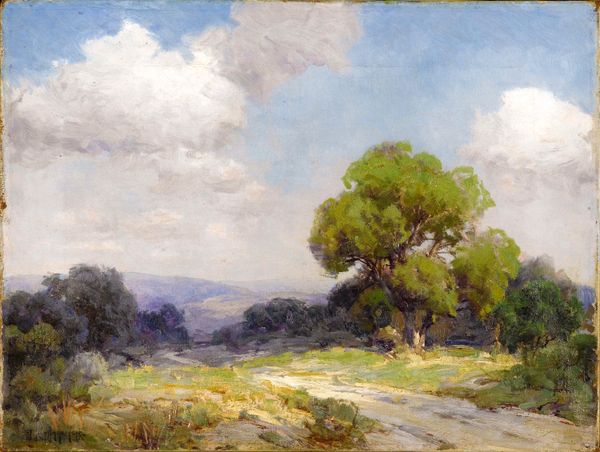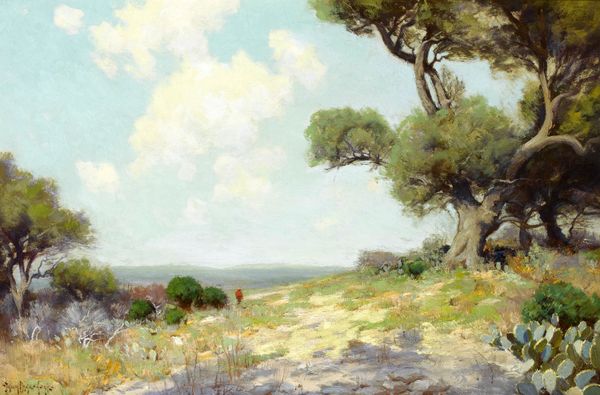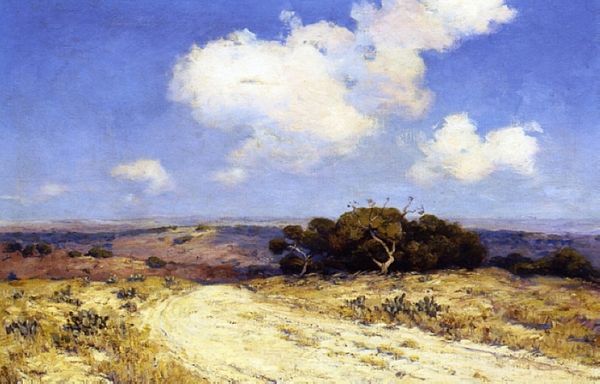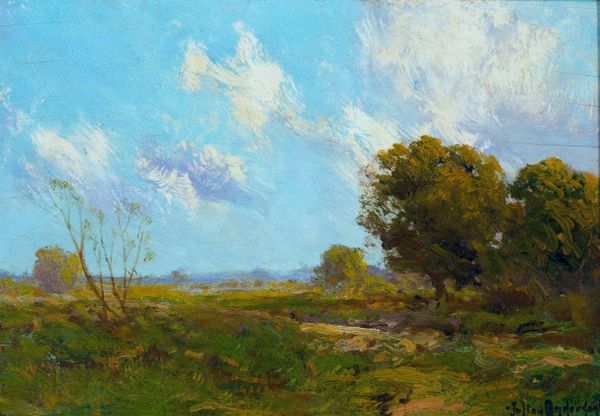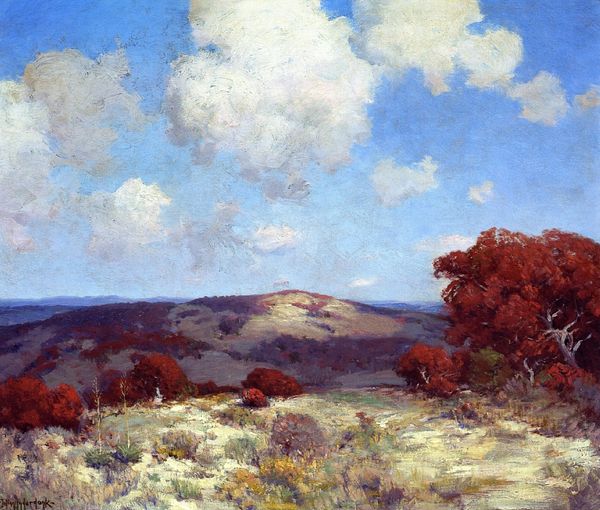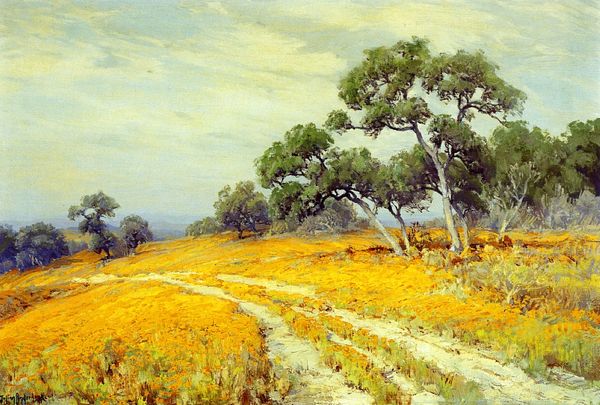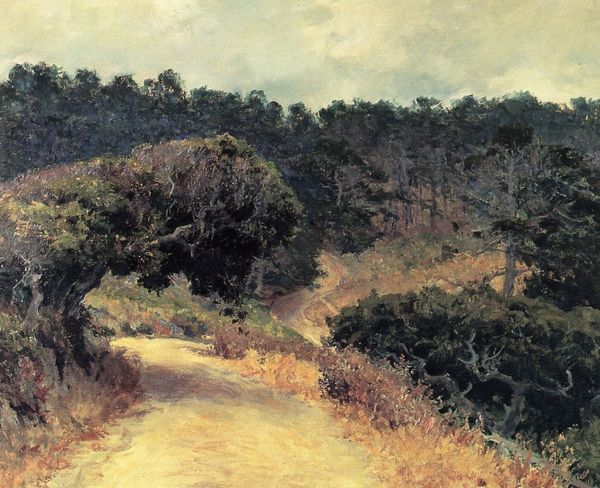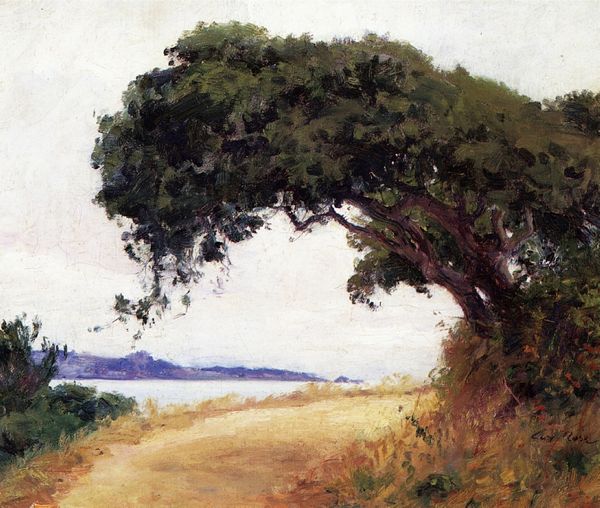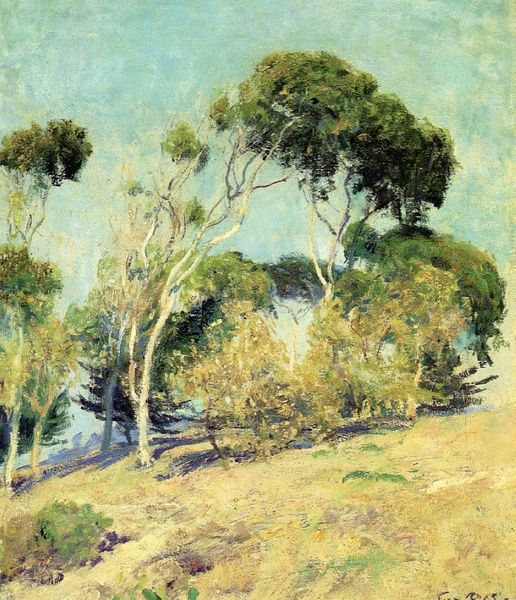
Copyright: Public domain
Curator: Upon viewing Robert Julian Onderdonk's "Sunlit Hillside" from 1913, I immediately perceive a scene steeped in tranquility. The texture, built with layers of impasto oil paint, hints at warmth and serenity. Editor: Onderdonk, a Texan Impressionist, often depicted the Texas landscape. This work likely captures a scene familiar to him. How might its representation of place speak to notions of identity and belonging? Curator: Precisely. Note the careful arrangement of color and light, the way Onderdonk models form. He focuses not merely on the mimetic representation of nature, but a studied arrangement of form and value. Editor: I see a visual rhetoric at play here, the placement of trees isn't merely representational. The dominant tree commands the composition—suggesting a subtle commentary on the power of nature, and perhaps humankind's place within it. Did his contemporaries echo these visual strategies, how was landscape being deployed to express specific political and ideological meaning? Curator: I posit it transcends a simplistic, one-to-one symbolic translation. It is more compelling, however, to analyze his construction through brushstroke and palette, observing the dynamic interplay between color temperatures to achieve luminosity. The way, for example, he renders clouds or even that copse of shrubs, shows his sensitivity. Editor: Though a semiotic reading unlocks multiple interpretative portals here. The lone tree could symbolize resilience, while the 'sunlit' descriptor brings forward ideas of growth and opportunity inherent in the Texan ideology, where open lands signify possibility. Does focusing primarily on form negate our grasp of social and historical resonance? Curator: Never— but grounding it primarily upon textual references diminishes the phenomenological experience, in my opinion. We appreciate the objective artistry as a matter of composition, tonality, texture and form. The subject, though aesthetically rendered, falls to the plane; yet, without skillful design and execution there lacks anything substantive for intellectual discourse, regardless of societal implications. Editor: Well, reflecting on our conversation, I find the artwork embodies a nexus point between subjective experience and historical interpretation. Appreciating it from both viewpoints—both through purely aesthetic awareness alongside that deeper sense making—provides a more fulfilling appreciation. Curator: I cannot refute that as a reasonable perspective and believe a refined synthesis produces its greatest interpretive worth.
Comments
No comments
Be the first to comment and join the conversation on the ultimate creative platform.
